Odds are you have a bottle of soy sauce or sriracha in your pantry, maybe a jar of tahini tucked away in the fridge. But there’s a whole glorious world of sauces and seasonings beyond these familiar staples just waiting to be discovered.
Supplementing your pantry with condiments from different regions makes it easy to perk up stale recipes, and it can help you nudge yourself out of your culinary comfort zone. Plus, ingredients from the global pantry offer an opportunity to explore other cuisines via your home kitchen.
So, the next time you’re grocery shopping, consider picking up one of these culinary gems. If the international aisle of your local supermarket looks a bit sparse, try searching online: There are myriad online specialty sites that offer a treasure trove of ingredients.
Who knows? You just might discover a new favorite flavor.
Achar
 A kind of South Asian pickle, achar is made by fermenting vegetables and fruits with spices and oil. Lime, mango, lotus stem, and chilies are all common ingredients, but the mixture varies depending on the region and what’s in season. The most basic way to enjoy achar is heaped over rice, but it goes with virtually everything. Try spooning it into dal to give the lentils a tangy flavor.
A kind of South Asian pickle, achar is made by fermenting vegetables and fruits with spices and oil. Lime, mango, lotus stem, and chilies are all common ingredients, but the mixture varies depending on the region and what’s in season. The most basic way to enjoy achar is heaped over rice, but it goes with virtually everything. Try spooning it into dal to give the lentils a tangy flavor.
Black Vinegar
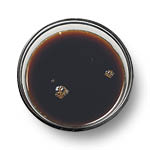 Viscous and flavorful, with malty, earthy notes, this Chinese vinegar (also called Chinkiang vinegar) offers much more than a pop of acidity. Jason Wang, owner of New York’s Xi’an Famous Foods, writes in his cookbook of the same name that black vinegar provides “a tangy, rich kick so ingrained in our cooking, so deified, artisans were trained to make it specifically for the imperial court during the Zhou dynasty.” Add a tablespoon to your noodles or salad dressing for a sweet-sour complexity.
Viscous and flavorful, with malty, earthy notes, this Chinese vinegar (also called Chinkiang vinegar) offers much more than a pop of acidity. Jason Wang, owner of New York’s Xi’an Famous Foods, writes in his cookbook of the same name that black vinegar provides “a tangy, rich kick so ingrained in our cooking, so deified, artisans were trained to make it specifically for the imperial court during the Zhou dynasty.” Add a tablespoon to your noodles or salad dressing for a sweet-sour complexity.
Chaat Masala
 This spice blend is the standard garnish for chaat, an umbrella term for savory snacks enjoyed across South Asia. Sprinkle it over roasted vegetables or fruit salads for a sour kick, or add it to soups and stews for a layer of complex spice.
This spice blend is the standard garnish for chaat, an umbrella term for savory snacks enjoyed across South Asia. Sprinkle it over roasted vegetables or fruit salads for a sour kick, or add it to soups and stews for a layer of complex spice.
Chamoy
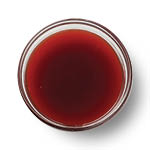 This sweet-savory sauce is traditionally made with ume fruit, but modern versions often include mango, tamarind, and other sour fruits. Use it to marinate chicken or ribs, or enjoy it the way generations of Mexicans have: drizzled over mangoes, apples, and cucumber, or generously poured over shaved ice.
This sweet-savory sauce is traditionally made with ume fruit, but modern versions often include mango, tamarind, and other sour fruits. Use it to marinate chicken or ribs, or enjoy it the way generations of Mexicans have: drizzled over mangoes, apples, and cucumber, or generously poured over shaved ice.
Chili Crisp
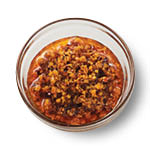 Garlicky and peppery, with layers of warm spices, Chinese chili crisp gets its texture from fried onions and garlic and typically includes roasted nuts for added crunch. Packed with flavor but not too fiery, chili crisp is perfect for spooning over noodles, dumplings, and even fried eggs. Is there anything that isn’t enhanced with a dab of chili crisp? You be the judge.
Garlicky and peppery, with layers of warm spices, Chinese chili crisp gets its texture from fried onions and garlic and typically includes roasted nuts for added crunch. Packed with flavor but not too fiery, chili crisp is perfect for spooning over noodles, dumplings, and even fried eggs. Is there anything that isn’t enhanced with a dab of chili crisp? You be the judge.
Dukkah
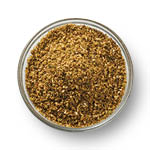 A flavorful Egyptian condiment, dukkah (also duqqa) is crafted from a fragrant blend of nuts, seeds, and toasted spices. As with many other spice blends, recipes vary, but coriander, cumin, and sesame seeds, plus hazelnuts or peanuts, are all common ingredients. Sprinkle it over hummus or yogurt dips to add a satisfying crunch; use it as a dry rub; or sprinkle it on your avocado toast. If you make dukkah at home, follow chef Yotam Ottolenghi’s advice and “be sure not to burn the seeds, removing them from the heat as soon as they begin to pop, and also not to process them much with the mortar and pestle so that they keep their texture.”
A flavorful Egyptian condiment, dukkah (also duqqa) is crafted from a fragrant blend of nuts, seeds, and toasted spices. As with many other spice blends, recipes vary, but coriander, cumin, and sesame seeds, plus hazelnuts or peanuts, are all common ingredients. Sprinkle it over hummus or yogurt dips to add a satisfying crunch; use it as a dry rub; or sprinkle it on your avocado toast. If you make dukkah at home, follow chef Yotam Ottolenghi’s advice and “be sure not to burn the seeds, removing them from the heat as soon as they begin to pop, and also not to process them much with the mortar and pestle so that they keep their texture.”
Fish Sauce
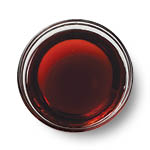 If you’ve ever had pad thai, you’re already acquainted with fish sauce. It’s made from fermented fish and has a unique salty, savory, and — yes — fishy taste. Try a teaspoon or two of fish sauce in sauces, dressings, and marinades for a hit of funky flavor.
If you’ve ever had pad thai, you’re already acquainted with fish sauce. It’s made from fermented fish and has a unique salty, savory, and — yes — fishy taste. Try a teaspoon or two of fish sauce in sauces, dressings, and marinades for a hit of funky flavor.
Furikake
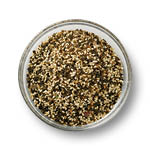 A Japanese umami-rich dry seasoning crafted from a blend of seaweed, sesame seeds, and dried fish, furikake is typically sprinkled over rice. It can also add flavor and a satisfying crunch to salads, soups, roasted potatoes, or even a bowl of popcorn.
A Japanese umami-rich dry seasoning crafted from a blend of seaweed, sesame seeds, and dried fish, furikake is typically sprinkled over rice. It can also add flavor and a satisfying crunch to salads, soups, roasted potatoes, or even a bowl of popcorn.
Harissa
 Take note, spice fiends: Harissa will set your taste buds alight. This hot Tunisian red-chili paste is a blend of roasted red peppers, Baklouti peppers, and garlic, mixed with a fragrant assortment of spices and herbs. Use a dab on burgers or in sandwiches, toss it with your roasted veggies, or swirl it into sauces and dips to add a fiery kick. (Make these Steak Skewers With Harissa for your next dinner.)
Take note, spice fiends: Harissa will set your taste buds alight. This hot Tunisian red-chili paste is a blend of roasted red peppers, Baklouti peppers, and garlic, mixed with a fragrant assortment of spices and herbs. Use a dab on burgers or in sandwiches, toss it with your roasted veggies, or swirl it into sauces and dips to add a fiery kick. (Make these Steak Skewers With Harissa for your next dinner.)
Miso Paste
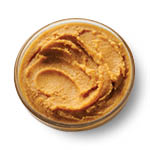 This salty, earthy condiment has so many uses — it’s no wonder it’s one of the cornerstones of Japanese cuisine. Miso is made by fermenting soybeans with salt and koji, a mold used to make everything from sake to soy sauce. Mix it into marinades or stir it into vegetarian dishes to infuse them with savory flavor. Add it to cookie dough or brownie batter for an unexpected explosion of umami. If you’ve never tried miso, start with the shiro (or white) variety: Its sweet, mild flavor offers the ideal introduction. (Try it with the recipes at “Miso”.)
This salty, earthy condiment has so many uses — it’s no wonder it’s one of the cornerstones of Japanese cuisine. Miso is made by fermenting soybeans with salt and koji, a mold used to make everything from sake to soy sauce. Mix it into marinades or stir it into vegetarian dishes to infuse them with savory flavor. Add it to cookie dough or brownie batter for an unexpected explosion of umami. If you’ve never tried miso, start with the shiro (or white) variety: Its sweet, mild flavor offers the ideal introduction. (Try it with the recipes at “Miso”.)
Pomegranate Molasses
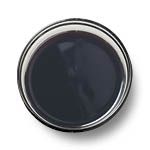 This concentrated sweet-tart condiment appears in both sweet and savory Middle Eastern dishes. It is brilliant for glazing meats, whisking into salad dressings, or using in place of molasses in your favorite baking recipes to give them the tantalizing taste of pomegranate. (Try it out with this recipe for Pomegranate Peach Barbecue Sauce.)
This concentrated sweet-tart condiment appears in both sweet and savory Middle Eastern dishes. It is brilliant for glazing meats, whisking into salad dressings, or using in place of molasses in your favorite baking recipes to give them the tantalizing taste of pomegranate. (Try it out with this recipe for Pomegranate Peach Barbecue Sauce.)
Sichuan Peppercorns
 Sichuan (or Szechuan) peppercorns are unique in the spice world. As Wang writes, “While Sichuan peppercorns don’t have capsaicin like spicy peppers, they do include another compound that triggers a vibrating, intense tingle.” That tingle is a numbing sensation that brings out the flavors of other ingredients. Toast the peppercorns, then grind some over a spicy stew or zingy marinade to elevate the dish to a whole new level.
Sichuan (or Szechuan) peppercorns are unique in the spice world. As Wang writes, “While Sichuan peppercorns don’t have capsaicin like spicy peppers, they do include another compound that triggers a vibrating, intense tingle.” That tingle is a numbing sensation that brings out the flavors of other ingredients. Toast the peppercorns, then grind some over a spicy stew or zingy marinade to elevate the dish to a whole new level.
Za’atar
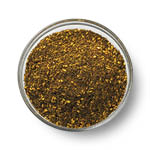 “If there is one smell to match the emblematic image of the Old City of Jerusalem, one odor that encapsulates the soul of this ancient city nestled in the Judean Mountains, it is the smell of za’atar,” writes Ottolenghi in his cookbook Jerusalem. Numerous versions of za’atar exist, but this herb-and-spice blend typically includes oregano, wild thyme, marjoram, sesame seeds, and sumac. Common throughout the Middle East, za’atar is also used across northern Africa and brings an earthy yet citrusy flavor to roasted and grilled fare, dips, and flatbread.
“If there is one smell to match the emblematic image of the Old City of Jerusalem, one odor that encapsulates the soul of this ancient city nestled in the Judean Mountains, it is the smell of za’atar,” writes Ottolenghi in his cookbook Jerusalem. Numerous versions of za’atar exist, but this herb-and-spice blend typically includes oregano, wild thyme, marjoram, sesame seeds, and sumac. Common throughout the Middle East, za’atar is also used across northern Africa and brings an earthy yet citrusy flavor to roasted and grilled fare, dips, and flatbread.
This article originally appeared as “Culinary Gems From Around the World” in the June 2022 issue of Experience Life.
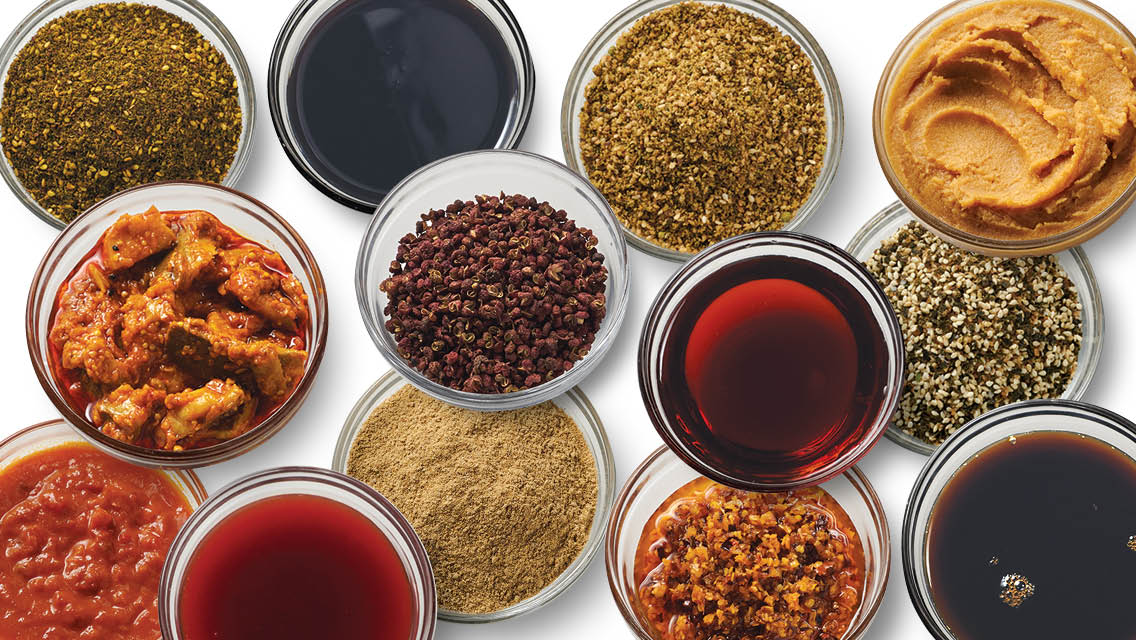

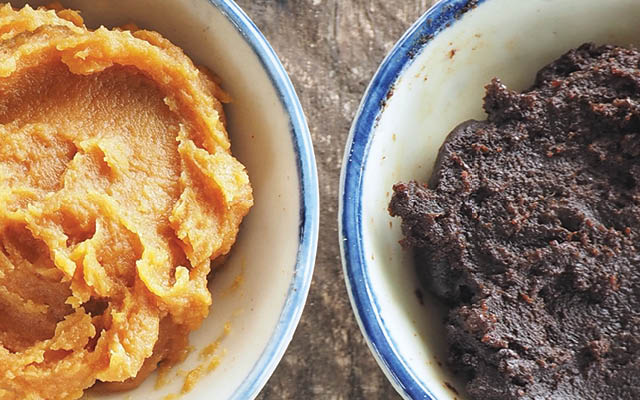

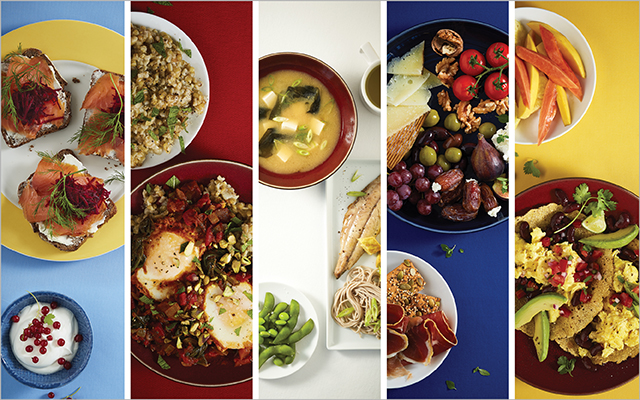
This Post Has 0 Comments